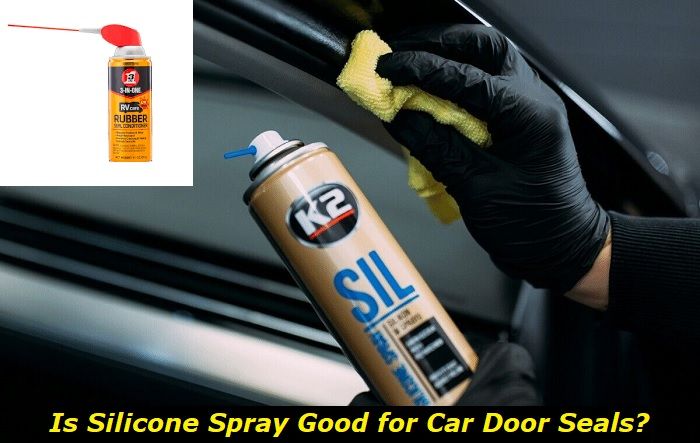The Ford Motor Company issued a recall report of nearly 200,000 F150 trucks in December last year. They all had an issue that could potentially damage the driveshaft. In an NHTSA recall report dated December 16, 2021, Ford said that several trucks from the 2021 and 2022 model years had a problem with their underbody thermal insulators.
Drive shaft problems highlights
- Level of importance:high
- Common reasons:old drive shaft, accidents, broken rubber protection
- DIY inspection:possible
- DIY repair:impossible
- Average price in shops:$250 - $500
- Average time:2 - 3.5 hours
- If ignored: no-drive, unpleasant sounds, hub wear

What is a Drive Shaft?
A drive shaft is a vital part of any vehicle. In Ford F150, it's a part of the drivetrain. It's a tubular aluminum structure that spins to convert the electrical power created by the motor into the mechanical energy that drives the wheels.
Common Problems with the Ford F150 Driveshaft
The Ford F150 drive shaft problems include general wear and tear that could be escalated by overheating and driving on uneven roads. Rust, damaged universal joints, and broken drive shaft covers are other common problems with this vital component.
- Damaged Universal Joints
Universal joints are x-shaped steel parts that connect the driveshaft to the transmission system. The bearing caps at each end of the U-joint allow the rigid drive shaft to rotate freely when it connects with the transmission. They allow the drive shaft to move up and down at an angle when the truck travels on uneven or bumpy roads.
The Ford F150 has universal joints at the two ends of the drive shaft. Without this system, it would be impossible for the pickup truck to have suspension that provides any significant wheel travel. That means the driveline would bind with all the potholes and bumps the truck meets on the road.
When this part breaks down, it could further damage the transmission system. Damaged universal joints could also cause the drive shaft to separate from the truck and cause severe damage to the vehicle or even an accident. It is advisable to diagnose this problem before it escalates and leads to severe and costly damage to the transmission or the vehicle.
- Rust
Would anyone complain about rust on a truck they've used for over ten years? Probably not. How about buyers who received their brand new 2021 Ford F150 trucks with rust on the bottom?
That's right. Several 2021 and 2022 model year F150 trucks are already proving magnetic to rust. And while the Motor Company says it's not something to worry about, rust underneath a truck is a significant future risk to the vehicle's drive shaft (not directly, of course, but the problem is showing something is wrong with metal quality and other factors).
On the 2021 models, several underbody parts, including the exhaust, wheel hubs, differential, and axle, came covered with rust. And although it's not clear how many F150 trucks left the factory with rusty parts, the fact that many people have filed complaints means they aren't just a few.
Living with your truck for years and noticing rust underneath is less frustrating. Brand new vehicles should come in pristine conditions.
- Cracked Driveshaft Covers
Drive shafts are covered to elongate their lifespan. The covers reduce the component's direct contact with the elements, such as mud and water. When you drive on muddy or snowy terrain, your drive shaft is protected from the harsh effects by these covers.
What makes these covers vulnerable is the materials they're made of. Ford uses rubber materials that are susceptible to damage. Additionally, these materials wear and tear relatively fast, considering what they are exposed to.
When these covers crack, they expose the drive shaft to direct conduct with the elements. When dust, debris, and other unfriendly road elements land on the drive shaft, they reduce its lifespan. It can break easily. To reduce the effects of broken covers, ensure you check them regularly. It is better and cheaper to fix broken covers than a damaged drive shaft.
- Carrier Bearing Failure
Is your truck making strange noises from the bottom? Is it straining to accelerate, something that you aren't used to? Heads up; it could be time to replace the carrier bearing. A damaged carrier bearing causes your truck to make a lot of noise and vibrations. General wear and tear is the leading cause of carrier bearing failure.
The carrier bearing is the part responsible for the proper alignment of a rotating shaft. In your F150, the bearing is found at the two ends of the drive shaft. It helps effectively transfer power from the engine to the wheels. Another symptom of a damaged carrier bearing is reduced fuel economy. If you suspect this problem in your truck, it's time to visit your Ford specialist.
Why Does the F150 Driveshaft Keep Failing?
- Environment
There's nothing wrong with the Ford F150 that makes it rust faster than other trucks. Although several F150 trucks arrived at their new owners with rusty underbody parts in 2021, that doesn't mean they all have that same problem.
However, when talking about what makes the trucks rust, the focus is mostly on trucks that arrived in pristine conditions and developed rust over time.
The drive shaft is located at the bottom of the F150. Everything the truck steps on will always splash and come in conduct with the shaft - mud and water. That said, trucks used on snowy and salty surfaces will rust faster than vehicles driven on less salty roads. Regular maintenance will minimize the chances of your truck rusting underneath and eventually elongate the drive shaft lifespan.
- Misalignment
Modifying the rear differential or the transmission mounting can cause misalignment to your vehicle's drive shaft. Misalignment will cause the drive shaft to vibrate excessively. As a result, the universal joints can fall out of place and damage the shaft.
Lifting your Ford F150 can significantly affect the functioning of the drive shaft. Additionally, large tires will reduce the lifespan of the universal joints. When you add a lift kit or oversized tires to your truck, check to ensure the u-joint angles are still in their proper positions.
- Loose Connections
Sometimes loose bolt connections cause the universal joints to fall out of place. The u-joints are connected to the drive shaft and transmission with bolts. When the bolts rust, they corrode and eventually become loose.
Excessive vibrations could also loosen the bolts when not appropriately torqued. A worn-out transmission housing can also cause the bolts to loosen.
- Wear and Tear
General wear and tear is the primary reason for the failure of many things, and your F150 drive shaft is not exempted.
Every part of a vehicle experiences wear and tear over time. When this happens to any component of the drive shaft, it'll likely cause the entire drive shaft to fail. If you drive your F150 truck on off-road terrain or uneven surfaces, it'll experience wear and tear faster than those used on flat surfaces.
However, although this is inevitable, proper lubrication of the U-joints can significantly elongate your drive shaft's lifespan.
What's Next?
Is it time to replace your Ford F150 drive shaft? Before you go ahead, identify the cause of its failure. If the universal joints caused the problem, you need to know first why they failed. For example, if you recently treated your truck to a lift kit or larger tires, you will need an aftermarket u-joint to replace the OE-spec.
Additionally, if rusty underbody parts damage the drive shaft, you will have to devise a way to minimize rust after replacing or fixing the drive shaft. If you haven't been servicing your vehicle regularly, it is time to make it a habit so that your next drive shaft will not suffer the same fate.
About the authors
The CarAraC research team is composed of seasoned auto mechanics and automotive industry professionals, including individuals with advanced degrees and certifications in their field. Our team members boast prestigious credentials, reflecting their extensive knowledge and skills. These qualifications include: IMI: Institute of the Motor Industry, ASE-Certified Master Automobile Technicians; Coventry University, Graduate of MA in Automotive Journalism; Politecnico di Torino, Italy, MS Automotive Engineering; Ss. Cyril and Methodius University in Skopje, Mechanical University in Skopje; TOC Automotive College; DHA Suffa University, Department of Mechanical Engineering






Add comment